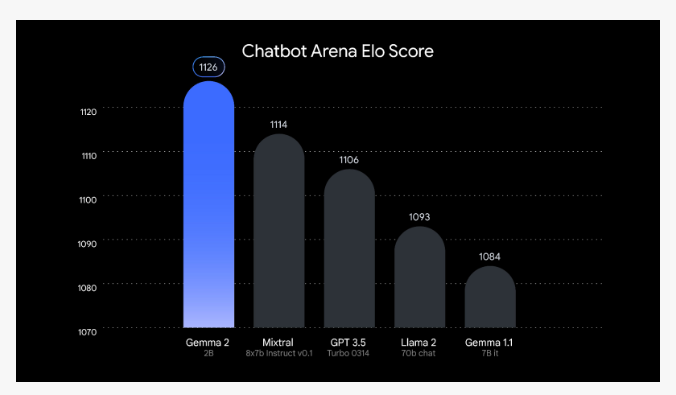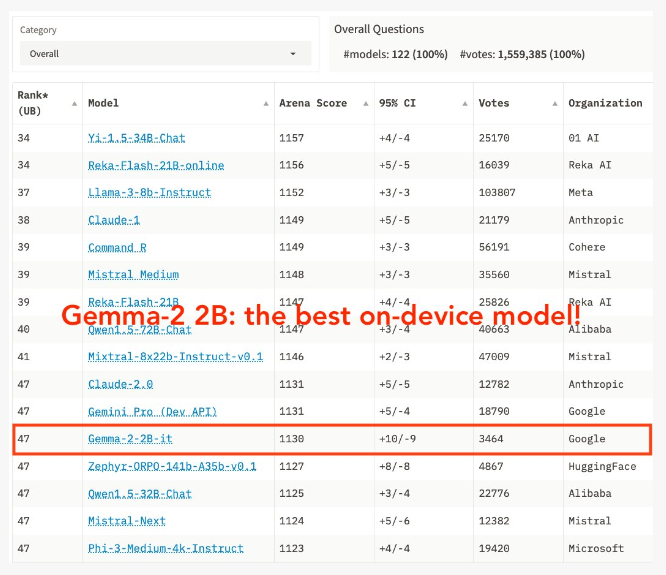Google has released its latest language model Gemma22B. This 2 billion parameter model has demonstrated excellent performance on multiple hardware platforms. It achieved impressive results on the Chatbot Arena leaderboard, outperforming numerous competitors and even matching larger models. In addition to its powerful performance, Gemma22B is also equipped with ShieldGemma security classifier and Gemma Scope tools to ensure the security and transparency of the model and facilitate researchers to deeply analyze its decision-making process. This release marks an important step for Google in the field of AI and highlights the fierce competition in the large language model market.
Google officially launched its Gemma22B model, a model with 2 billion parameters that demonstrates excellent performance in a variety of hardware environments. In addition to the powerful model itself, Google also launched the ShieldGemma security classifier to filter harmful content and provided the Gemma Scope tool for researchers to analyze the model's decision-making process.

Gemma22B's performance on the "Chatbot Arena" rankings is particularly eye-catching. With a high score of 1130, it has successfully surpassed many competitors including GPT-3.5-Turbo-0613 and Mixtral-8x7b, and can even compete with some Ten times the size of its models to contend with. Thanks to the optimization of the NVIDIA TensorRT-LLM library, Gemma22B is very efficient in deployment and suitable for a variety of scenarios from edge devices to powerful cloud environments. This makes it suitable for use in data centers, local workstations, and edge AI applications.

In the context of the rapid development of AI technology, this new release by Google is undoubtedly an important breakthrough in the fierce competition. In this regard, Rebecca Weiss, executive director of ML Commons, said that as AI technology matures, the entire industry needs to invest more resources in developing high-performance security assessment tools and looks forward to Google's continued efforts in this field.
In addition, the release of Gemma22B coincides with Meta’s launch of Llama3.1, which also surpasses OpenAI’s GPT-4o in most benchmark tests. OpenAI also released the more cost-effective GPT-4o mini last week, which is 30 times lower than GPT-40 and 60% cheaper than GPT-3.5Turbo.
Competition in the current large language model (LLM) market is becoming increasingly fierce. If Google wants to continue to gain a foothold, it must increase its innovation efforts and launch a more competitive Gemma3.
Highlights:
The Gemma22B model has 2 billion parameters and has excellent performance in multiple hardware environments. It has surpassed many models such as GPT-3.5-Turbo in the chat robot arena.
The new model is equipped with ShieldGemma security classifier and Gemma Scope tools to help researchers perform content filtering and decision analysis.
In the context of increasingly fierce competition in the AI industry, Google needs to accelerate the launch of Gemma3 to maintain market competitiveness.
All in all, the emergence of Gemma22B is an important advancement in the field of large-scale language models, which has demonstrated significant advantages in performance, security, and deployment efficiency. However, in the face of a fiercely competitive market environment, Google needs to continue to innovate in order to maintain its leading position. The success of Gemma22B also provides a new reference for the future development direction of large-scale language models.